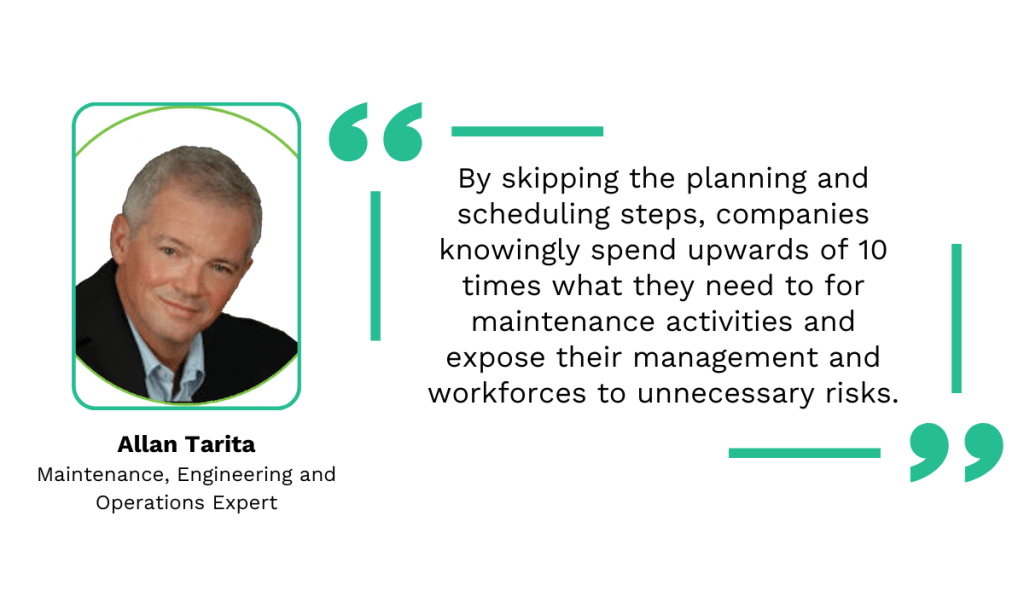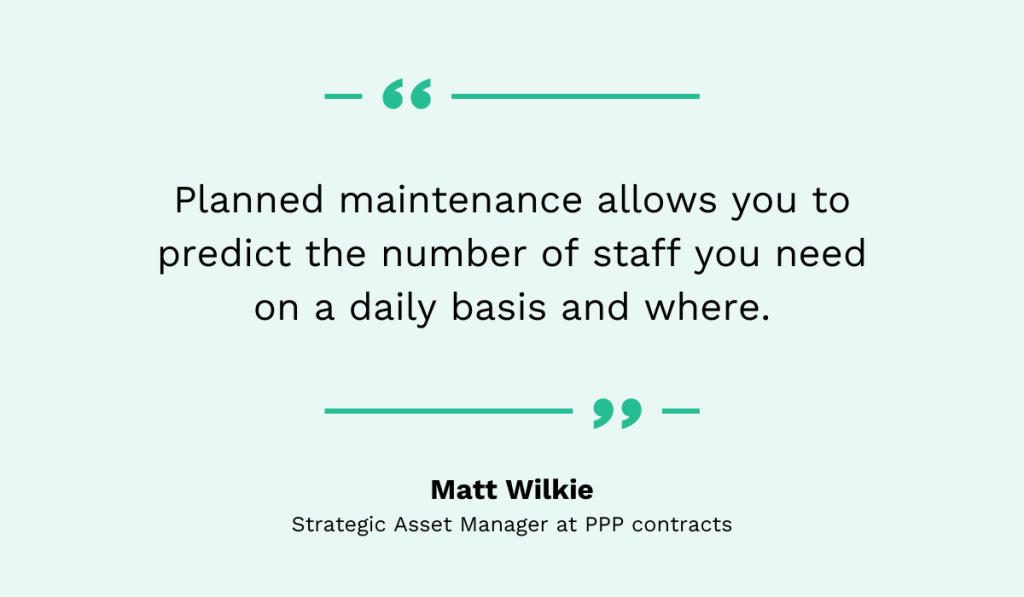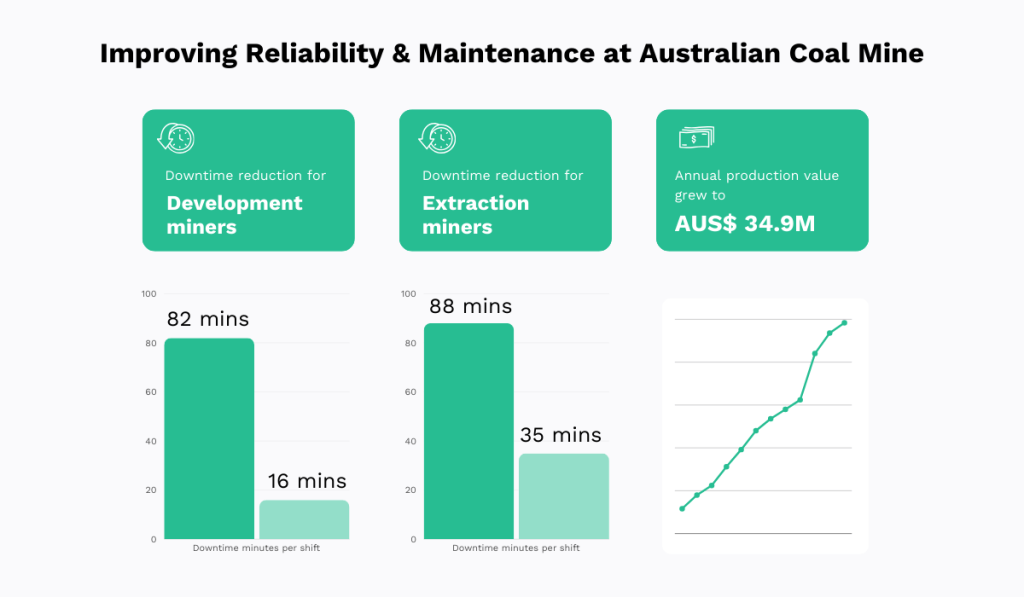Get a Free WorkTrek Demo
Let's show you how WorkTrek can help you optimize your maintenance operation.
Try for freeIs maintaining machinery costing you a lot of money?
Are frequent equipment breakdowns halting your operations?
If yes, it’s time to start planning ahead.
Planning maintenance will keep your equipment healthy, reduce unplanned downtime, decrease maintenance costs, and more.
But what better way to convince you to start planning than by showing you your potential future?
So, buckle up.
In the next few minutes, you will learn about the top six benefits of efficient maintenance planning that will make you wonder what took you so long to do it.
Less Unplanned Downtime
The worst thing about unexpected equipment failures is downtime you didn’t account for.
And when does equipment break unexpectedly?
When it’s not maintained properly.
Unplanned downtime creates a domino effect where paused operations and idle workers reduce productivity and skyrocket your costs.
In 2023, the “Value of Reliability” survey from ABB Motion Services showed that unplanned downtime costs industrial or manufacturing facilities an average of $124,669 per hour.
Making matters worse, the same survey revealed that almost 70% of sites experience unplanned downtime at least once a month.
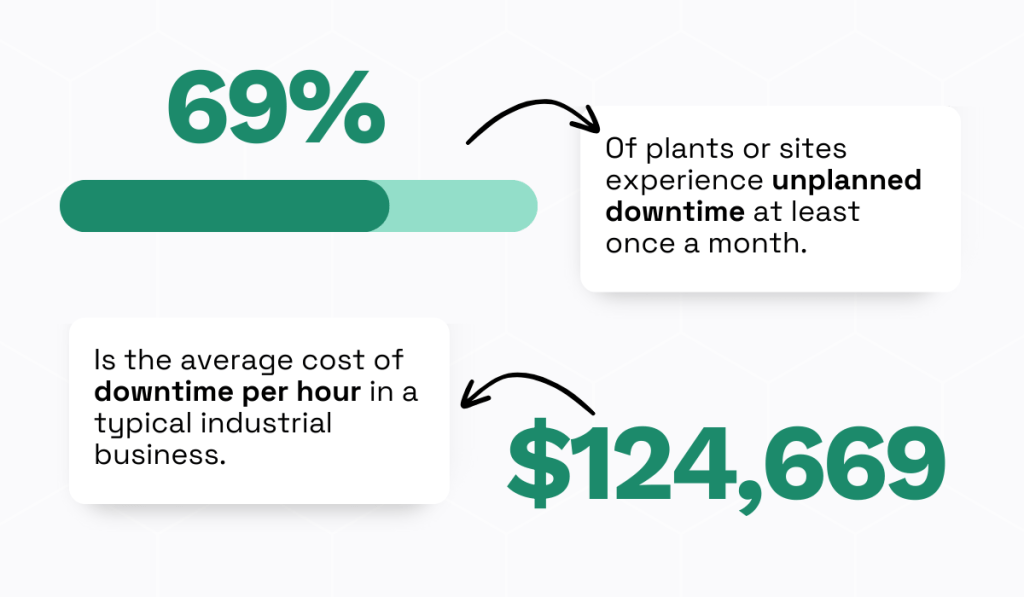
Over a year, that adds up to at least $1,500,000!
Fortunately, efficient maintenance planning reduces this costly downtime.
Regular maintenance checks keep your equipment in better condition, preventing sudden failures. You can identify issues early and prevent costly repairs or breakages.
Even if equipment fails unexpectedly, a good plan ensures you have all the spare parts, tools, and materials needed.
This way, technicians can start work immediately without waiting, shortening unplanned downtime.
Simmons Feed Ingredients (SFI), a company that produces animal nutrition for pet food, aquaculture, and livestock, faced these challenges before turning to proper maintenance planning.
The plant operated reactively, keeping spare parts in the storeroom to fix machines as necessary. But if parts weren’t available, machines were down until the appropriate parts arrived.
Tim Newman, the plant’s maintenance manager, noted:
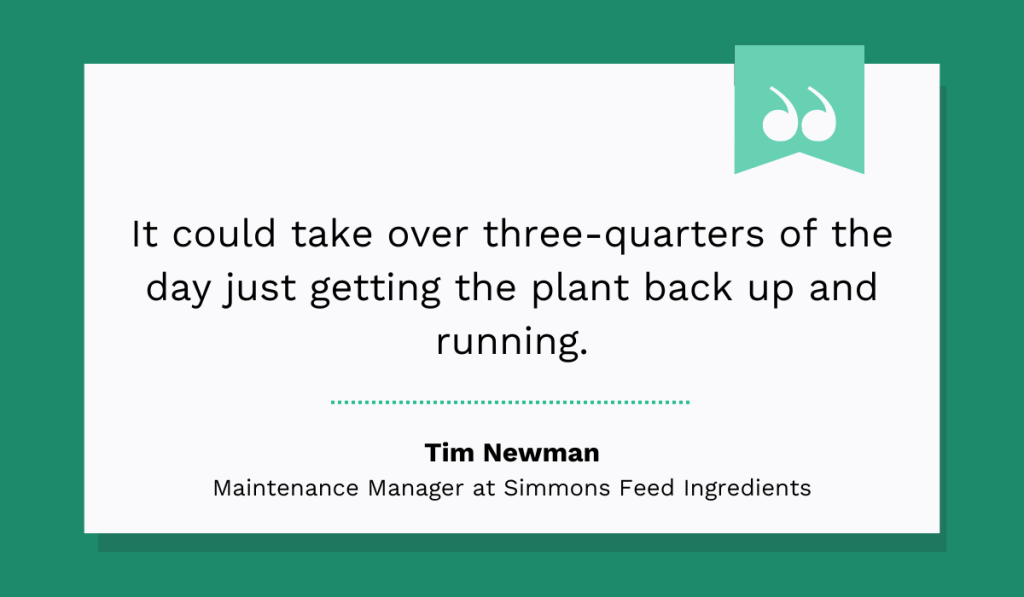
Considering the cost of an hour of unplanned downtime we mentioned above, this was extremely costly.
But to make things worse, they had to sell perishable ingredients to competitors at a lower price during unscheduled downtime to avoid expiration.
So, they faced additional financial losses. However, with the help of outside consultants, SFI developed a maintenance plan and established standardized maintenance procedures.
The result?
They transformed their maintenance from reactive to predictive and proactive, reduced downtime, increased the number of planned jobs, and saved money.
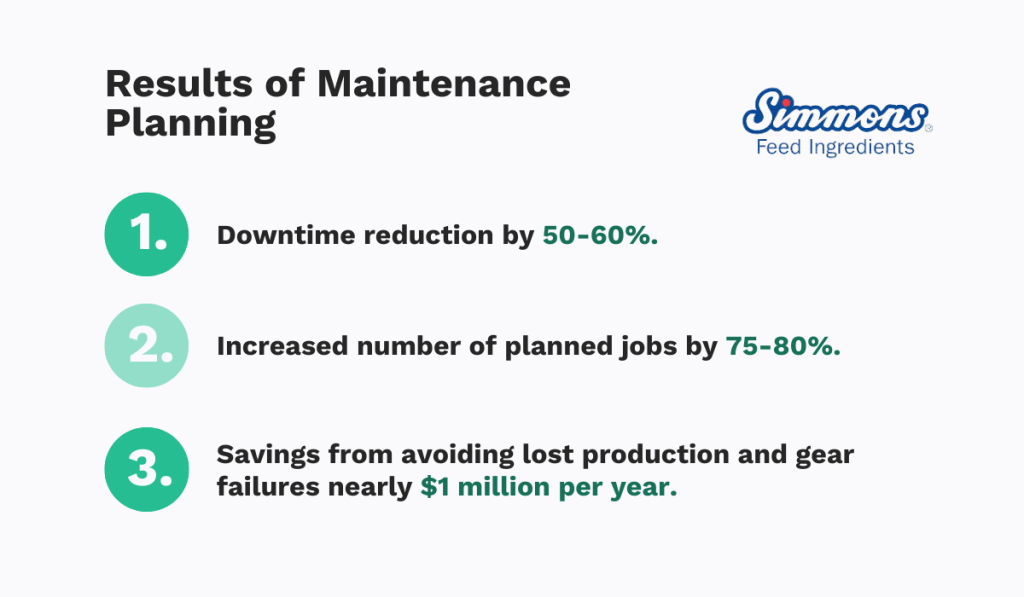
As we just saw, the costs of unplanned downtime are sky-high.
However, with efficient maintenance planning, you can avoid them altogether.
Lower Maintenance Costs
Efficient maintenance planning will help you keep your equipment in good condition and reduce overall maintenance costs.
When you plan maintenance ahead and regularly maintain your assets, you can identify issues before they get the chance to escalate.
This prevents costly emergency repairs, ultimately contributing to lower maintenance costs.
On the other hand, if you don’t plan maintenance beforehand and continually check up on your equipment, it can unexpectedly break down.
Allan Tarita, a leading maintenance, engineering, and operations expert, points out that this is costly and risky for your personnel.
Where do these high costs come from?
Emergency repairs cost more than planned maintenance because you need parts and labor immediately. So you might have to rush to order parts and spend more than usual.
Also, emergency repairs often require technicians to work overtime, adding to the expenses.
Sometimes, management might not even approve extra spending, so you must find other ways to handle it.
This happened to a maintenance manager Jan Barraclough, when he was working at a plant with two process trains.
Due to a complete lack of maintenance planning and routine inspections, the plant had multiple pump failures.
They also didn’t have enough spare parts, and management didn’t let Barraclough order as many parts as needed, as he recounts:
Due to the cost of “hot-shotting” them to site, I was only allowed to have 1 set of pulleys and taper locks flown in with a decent amount of Vee-belts (6 weeks away), the other pulleys and belts would have to come by road (6 months away).
So, they had to be fully reactive for the next six months.
He admits they could have replaced the pulleys in advance and avoided multiple failures with better maintenance planning. Regularly running the standby pumps would have made sure they were reliable.
This would have saved the high costs of emergency maintenance and rushed deliveries.
With all things said, it’s much smarter to plan ahead and regularly check your equipment.
It will cost you less in the long run.
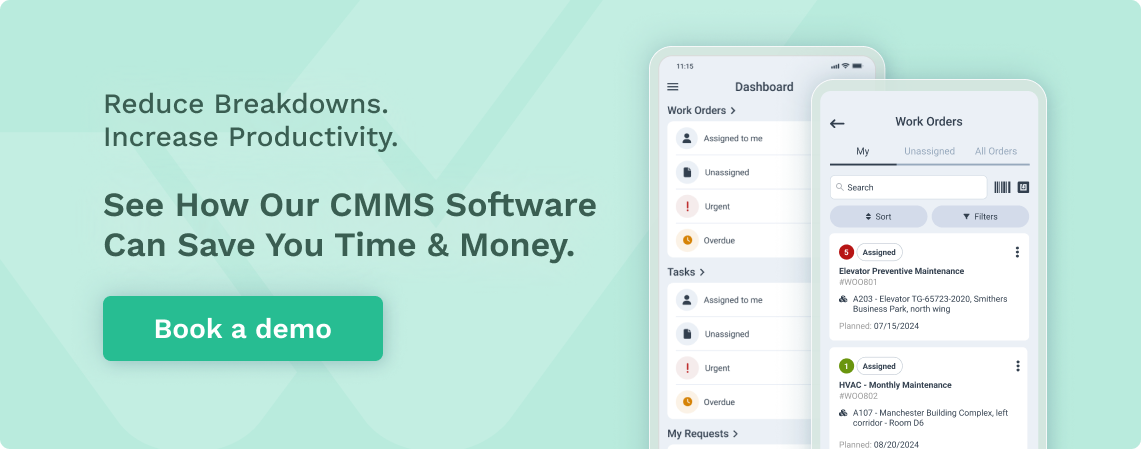
Better Resource Allocation
Another great benefit of efficient maintenance planning is ensuring that all necessary resources are available when and where needed.
This includes personnel, tools, spare parts, and materials.
Strategic asset manager at PPP contracts, Matt Willkie, puts it well:
Along with equipping them with the necessary tools and materials, this boosts productivity and ensures maintenance activities go as planned.
However, you’ll face delays and reduced productivity if you don’t prepare and allocate resources on time.
Don Armstrong, president of Veleda Services Ltd., offers consulting and training to maintenance departments in industrial plants, and gives a simple but impactful example in his article for Reliable Plant.
He explains that any need to return to the shop or stores can result in a 90-minute delay, pushing the job to the next day with another 90 minutes of travel time.
On the flip side, a fully detailed plan with all materials and tools readily available can change everything:
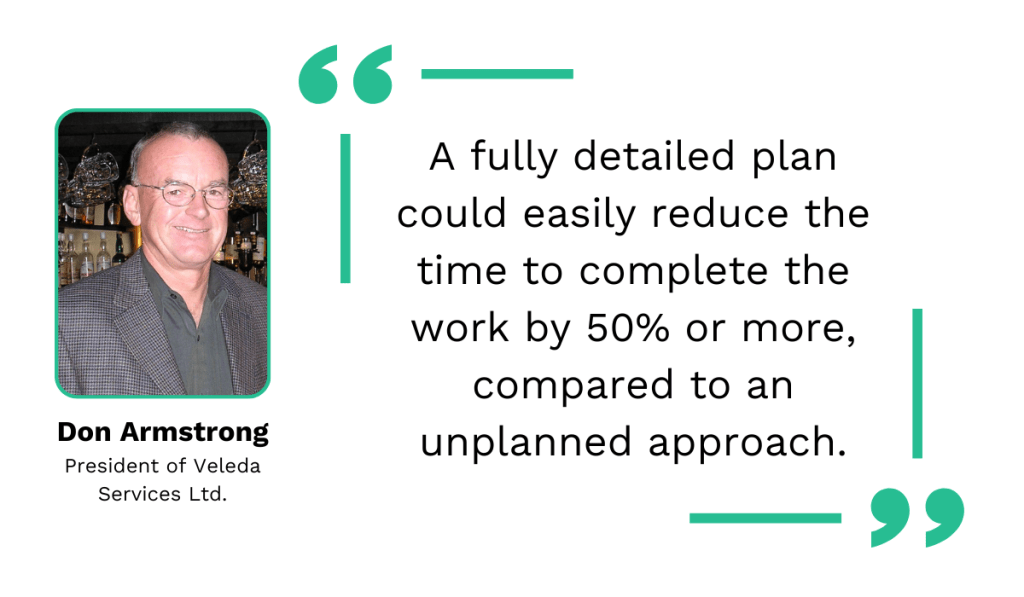
Moreover, when maintenance planning is efficient, you can also achieve better control over spare parts.
This happened in one food processing plant in North America.
They faced constant breakdowns and equipment failures because they didn’t plan their maintenance properly.
They often had no spare parts in the warehouse and lacked the right repair tools.
However, after developing a comprehensive maintenance plan, including preventive maintenance task schedules, and improving resource allocation, they enhanced spare parts control from 45% to 79%.
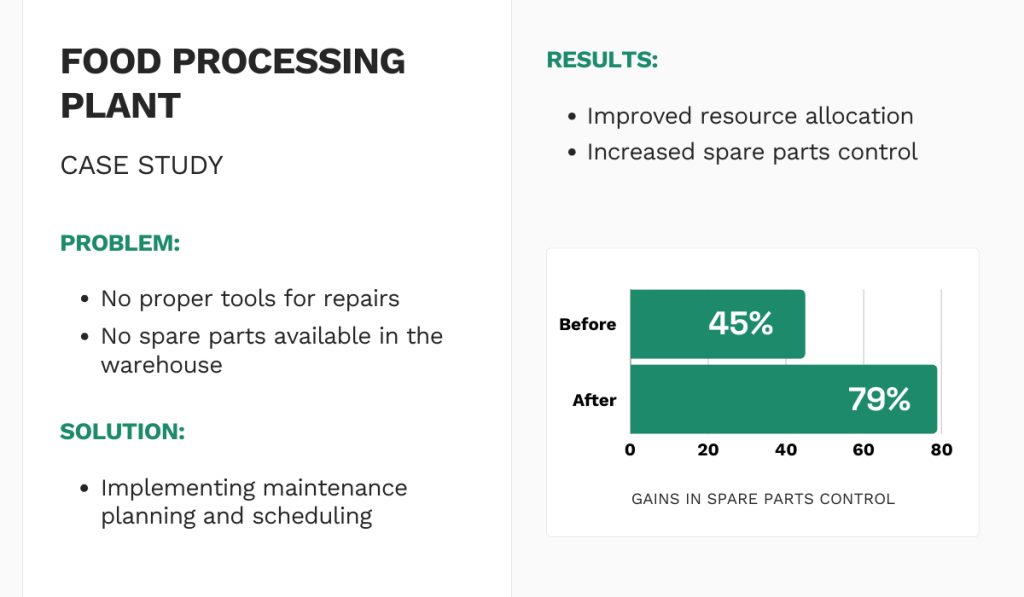
The bigger the control over spare parts, the higher the availability!
The key takeaway is this: when you plan, you ensure that tools, materials, and spare parts are ready when your technicians need them.
This makes them more efficient and prevents delays, idle time, and productivity loss.
That’s the goal for any facility, wouldn’t you agree?
Improved Safety
Talking about goals, safety should be a critical concern in any maintenance environment.
How could it not be knowing that poor maintenance and equipment malfunctions and failures can lead to accidents, injuries, and even fatalities?
But maintenance planning and better resource allocation can help you improve safety.
For example, many maintenance tasks require technicians to wear personal protective equipment (PPE).
Efficient planning ensures that enough PPE is available and that technicians know what to wear and when.
A good CMMS can help you with this.
When you assign work orders to your technicians, you can also include the PPE requirements for them to see.

But that is just one way of improving safety with maintenance planning.
Doc Palmer, a true expert in the field, explains three more ways it does so:
First, planners provide job plans in advance that anticipate and prepare for potential hazards. Second, planners save and apply knowledge from previous safety encounters to make plans even safer over time. Third, schedulers increase craft productivity to complete more proactive work to reduce the need for the most dangerous work altogether.
Let’s explain this a bit more.
First and foremost, regular inspections and preventive maintenance help you identify and address potential safety hazards before they cause accidents.
For example, checking and maintaining safety features such as emergency stop buttons, guards, and alarms can prevent accidents and protect your workers.
Second, a well-executed maintenance plan also includes safety protocols and procedures.
Clear guidelines for maintenance activities ensure that all tasks are performed safely and in compliance with industry standards.
For instance, you can implement lockout/tagout procedures to ensure that machinery is properly shut down and secured before maintenance work begins.
This helps protect your maintenance team and other employees from potential accidents.
Such proper safety measures are necessary because the consequences can be severe.
Just take a look at this report from OSHA explaining how an employee lost his hand because he (and workers before him) failed to lock out and tag out the equipment they were working on.

Accidents and injuries happen. However, with efficient maintenance planning, their number can be reduced to a minimum.
Safety is a priority, so maintain it with better maintenance planning.
Data-Driven Decision-Making
It’s not enough to rely on instincts when planning maintenance.
Efficient planning involves using historical data to determine which tasks must be done and spot any patterns that might help predict future maintenance needs.
Using these insights, maintenance planners can:
- Create better plans
- Improve maintenance procedures
However, to leverage historical data, you need good record-keeping.
That’s where a computerized maintenance management system (CMMS) comes in handy because it lets you store all data in one central place.
Take our system, WorkTrek, for example.
It lets you create and assign work orders to technicians and keep everything organized.
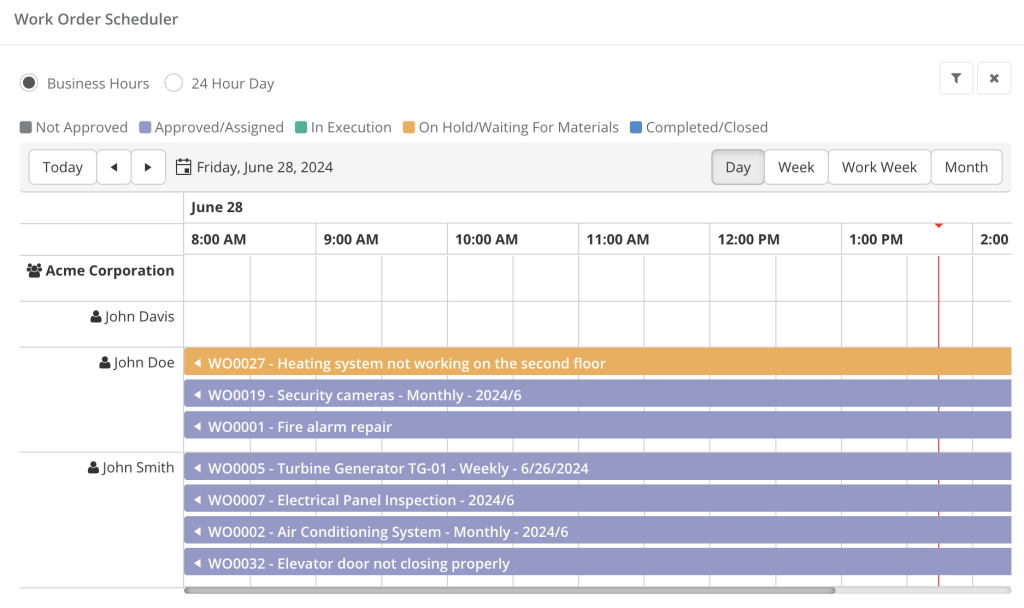
But what’s powerful about WorkTrek is its insights and analytics features.
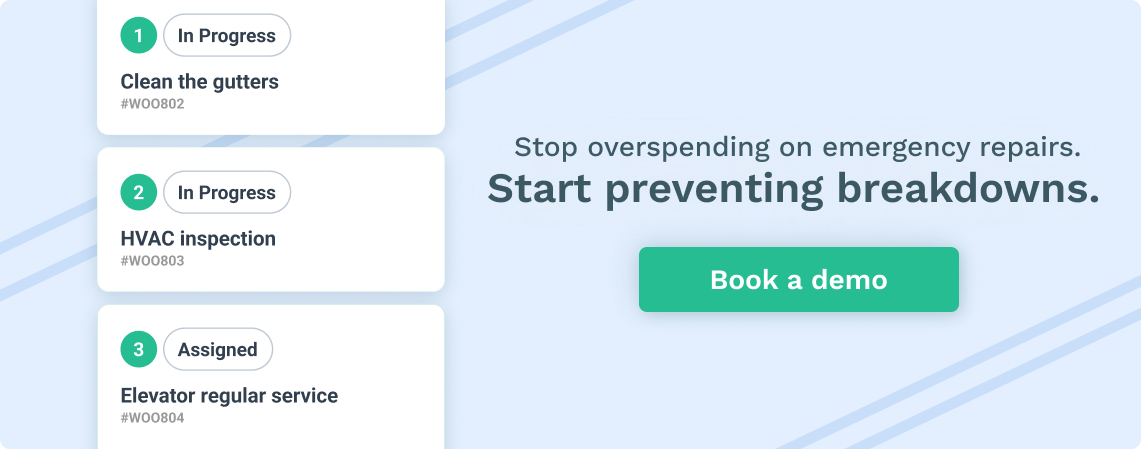
This system stores all your data, giving you a treasure trove of information for better decision-making.
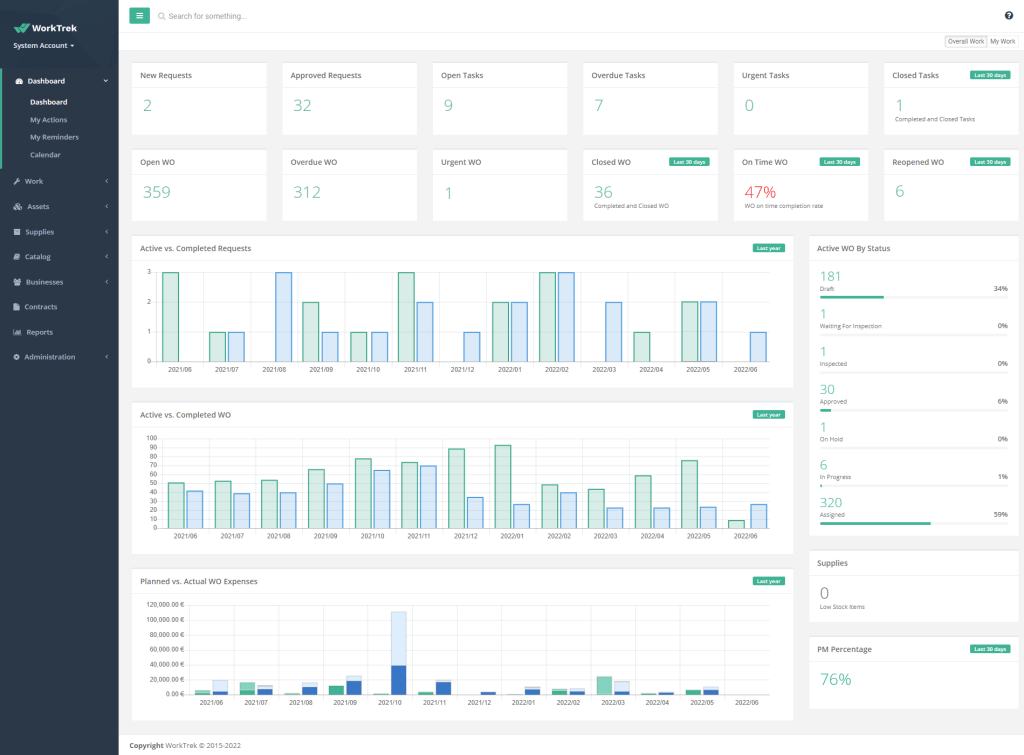
Here are some ways to use your data for better maintenance planning.
You can compare the costs of old work orders with your current ones, making cost estimates faster and more accurate.
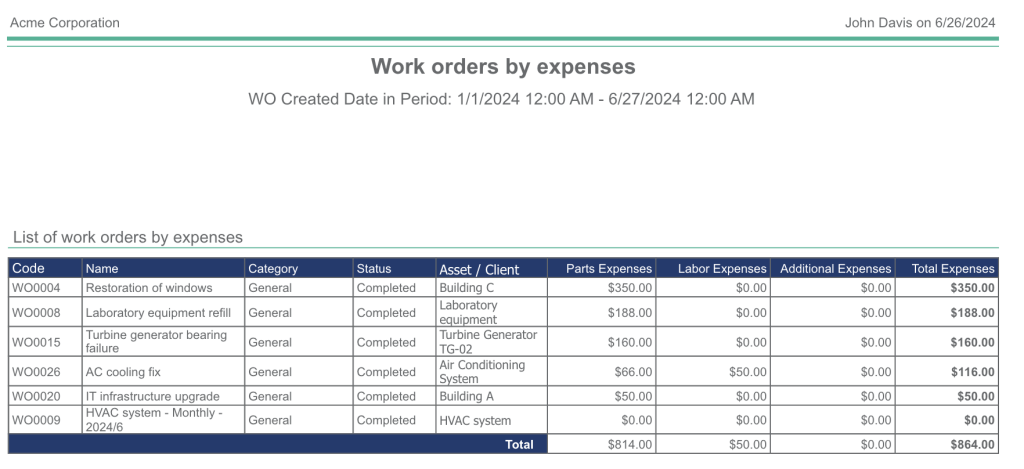
Moreover, instead of writing a plan or work order from scratch, you can help yourself with reports on parts used in previous jobs to create new work orders faster.
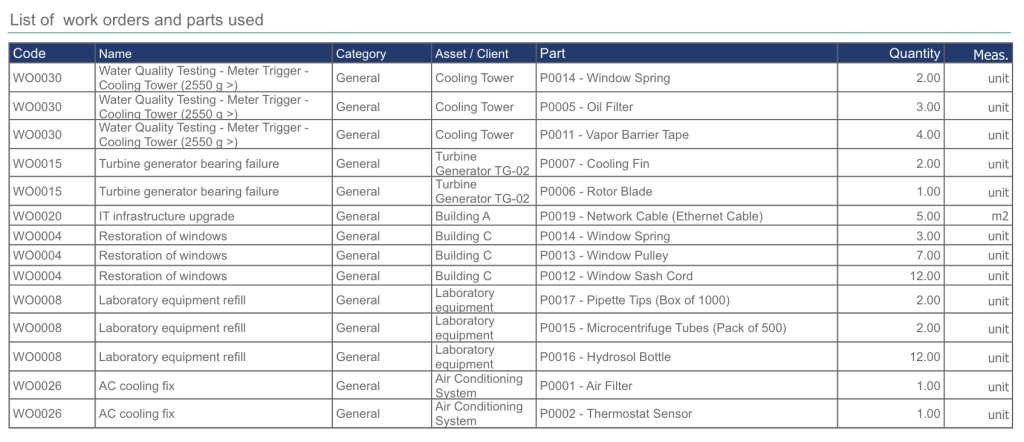
Monitoring key performance indicators (KPIs) is also simplified with WorkTrek.
Pre-built KPIs allow you to see how well your maintenance strategies work and compare them to industry benchmarks.
For example, if work orders aren’t completed on time, you can dig into the data to see if there’s a problem with how time estimates are made.
In addition, WorkTrek lets you turn your data into valuable reports and even set up automatic reports to be emailed to your team at regular intervals.
In the end, effective maintenance planning relies on using data—and using it wisely.
With a reliable CMMS, you can leverage your data to improve planning and make smarter decisions based on accurate insights and analytics.
More Coordination Between Stakeholders
Finally, having a maintenance plan ensures that everyone involved in maintenance operations knows precisely what needs to be done, how, and by whom.
Why does this matter?
This clarity reduces misunderstandings, fosters accountability, and ensures everyone is on the same page about the planned maintenance activities.
This, naturally, has significant advantages:
- No wasted time between jobs
- Safety protocols and SOPs are followed
- Maintenance work is completed on time
However, for this to work seamlessly, you, once again, need the right CMMS.
With a good CMMS, you can coordinate all activities, prioritize tasks, assign work orders, and follow up on them.

Your technicians can see what tasks need to be completed, follow guidelines on how to do them, and, if necessary, request additional service on the spot.
Moreover, a good CMMS is mobile-friendly.
This means people can receive real-time notifications on their phones, fill out checklists, and complete work orders while in the field.

All these features combine to ensure that maintenance is coordinated between key personnel—from the manager to the technician.
But what about coordination between maintenance and operations?
Maintenance planning can improve this, too.
Consider the case study from a coal mine in New South Wales, Australia.
Their production and maintenance schedules were not aligned due to a lack of real maintenance planning.
This caused machines to be down even if no maintenance was being carried out.
Another issue was poor coordination between maintenance planning and inventory management.
However, a detailed implementation plan was developed.
The mine assigned planner positions to ensure maintenance activities were systematically planned and aligned with operational needs.
This, along with regular meetings between the two departments, brought significant results, from downtime reduction to increased annual production value.
The bottom line?
With the help of the right CMMs, efficient maintenance planning will improve the coordination of all people, tools, materials, and spare parts needed for maintenance.
And last but certainly not least, it will improve collaboration between maintenance and operations.
This is, ultimately, key to reducing downtime and achieving a more efficient facility or plant.
Conclusion
We hopefully showed you how efficient maintenance planning brings significant benefits.
From minimizing downtime and cutting costs to improving safety and production value, each reason for adopting maintenance planning is compelling enough.
So, why wait? Start planning your maintenance now.
The rewards will follow sooner than you think.





